An Unusual yet Fascinating Pilot’s Watch, the 1950s Jardur Chronograph
Unconventional, purpose-built and just beautiful!
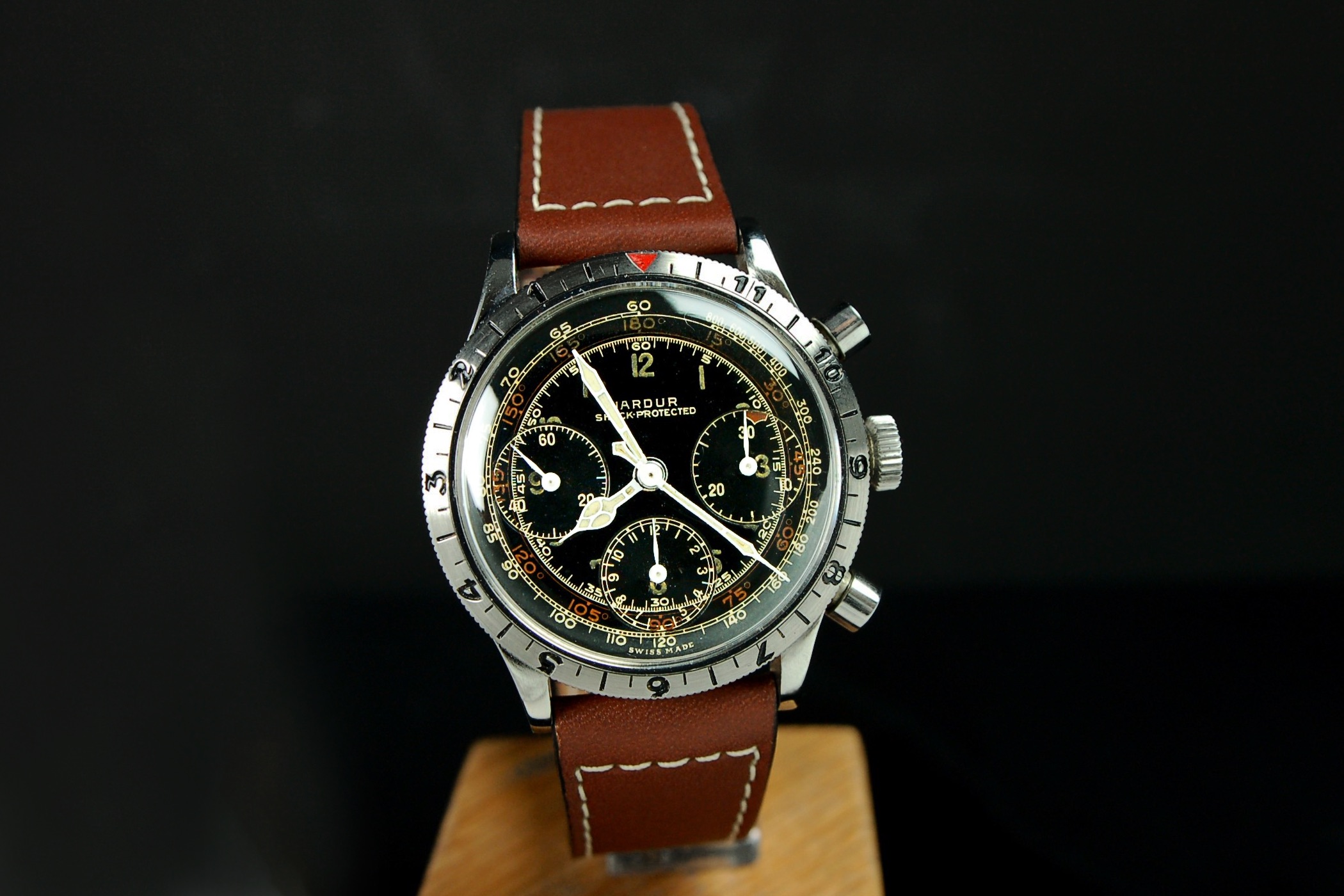
The Jardur Company of 874 Broadway, New York was a manufacture of “Navigation Instruments” as well as an importer of the Jardur Bezelmeter and Super FlightMaster aviation wristwatches and chronographs. In the early days of commercial flight, someone had to provide the navigational instruments, logbooks, charts, navigational aids and elapsed time recorders to make long-distance flight possible and Jardur was one of those companies. I contacted AOPA (Aircraft Owners and Pilots Association) to find out about Jardur as I had seen it referenced by pilots as their ‘flight watch of choice’ including B-29 Pilots during WWII as well as amateur pilots of the period.
Below, a Jardur Flight Calculator and Plotter
Below, a small 24-hour dial manual-wind Jardur pilots watch
I first came across chronographs from Jardur 20 years ago, when I was reading a book about the “Bush Pilots” of the first half of the 20th century – this was a hardy bunch of people who pioneered postal mail networks in South America, delivered provisions to miners in Australia’s outback and who lost their lives crashing in the East Siberian Sea while trying to rendezvous with an icebound Schooner.
Pilots like Harold Gillham, one of Alaska’s first bush pilots, had a rhyme written about him travelling in the open cockpit of his Curtiss HS-SL 1919:
“He Thrill em, Chill em, Spill em, But no Killem Gillham.” Killem Gillham
I have seen Jardur watches sold from Australia to Canada and from Africa to the USA, always from out-of-the-way addresses in North Canada, North Africa, Outback Australia and the Midwest USA. Places where this kind of aviation ‘tool’ would have been used and then left in a drawer. It is difficult in Britain to capture the importance of correct timing as a navigational aid at a time when if you ran out of fuel in Montana, you could be over 100 miles in any direction from the nearest person.
I have also seen these watches sold from the estates of US Flying Fortress Pilots based over here in the UK during WWII and one date engraved from 1945 belonging to a North American Aviation P-51 Mustang pilot.
Essentially, I believe that these watches were used by pilots everywhere at that time as their logbooks, Flight Computers and Navigational Plotters were often from Jardur too.
This watch is a real piece of aviation history as well as being a very beautiful object! The 38mm case is a very sturdy with a solid stainless steel design, flat industrial brushed sides with polished lugs, on the underside of which, one lug has the case number 844 – something you don’t see very much but a feature of several pre-War military watches, including the Czech Longines. The bezel has a sharp coin-edge profile that is perfectly brushed and engraved with 12 Arabic hour numerals, filled in black with the aviation symbol triangle in red at 12 o’clock. The caseback is the only one I have seen that is a snapback. Then, the Super Flight Master watches I have seen normally have a Valjoux 72 movement and a large screw-in case back. I think this is an early one as they moved to the sharper lugged two-register Lemania movement watches from the waterproof design. This is a large watch, particularly for one that is 70+ years old, watches just weren’t made that big then but now it is just right.
Remember that at this time notched screw-down casebacks were unusual as hardly any watches were deemed waterproof. When this watch was disassembled for servicing, my watchmaker called me and asked me to pop in to see the watch stripped down. What amazed me was that the three areas were water could egress were the holes for the crown/stem and the chronograph pushers. Well, on this watch there are tubed shoulders soldered into the holes made in the case by the extraneous function buttons. The tubes created for the pushers and crown stem are lined with ‘cork’! Yes, cork to keep it waterproof/dustproof!
Amazingly, after 60 odd years, the cork lining that was moulded into the interior of the protective shoulders is still there to this day.
The watch has a beautiful movement, a yellow gilt Valjoux 71, a 12-hour manual-wind chronograph, which is the forerunner of one of the best movements of all time. The movement is very clean and has never had any rust with just a slight discolouring of the gilt, which is to be expected with a watch of this age.
Now, the dials of these watches are something else. To begin with, you hardly ever see dials in this condition. This watch is essentially a 12-hour recording chronograph with a 30-minute elapsed time recorder on the right. It also can track a second time zone with the 12-hour bezel by setting an offset to the hour hand of the actual time. These things are essential to a pilot for calculating waypoints for fuel stops and for setting the second time zone for crossing from one to another.
The dial is gloss black with the registers sunken and riven so as to show contrast at an angle making them stand out on the complicated dial. The light colour printing is in a pale gold/gilt, which includes a tachymeter on the outside edge and a 60-second counter around the centre including the sub-dials. The Arabic numerals were made of solid lume and have aged into a mellow khaki – which looks fantastic against the gilt.
The final amazing part of the dial is that it has a marked 180-degree ring. The story of this track needs to be explained. Planes were adjusted so they could do a standard turn of 3 degrees per second. For instance, if the pilot wanted to make a 75-degree turn, he’d start the chronograph and for each elapsed second, the plane would turn 3 degrees. Thus, after 25 seconds, when the seconds hand pointed at 75 on the dial, the plane would have made a 75-degree turn.
This watch also has the nicest hands of any watch from the mid-century I have ever seen, reminiscent of the WWII Smiths aircraft clocks – also known as cathedral hands. Easy to see and in incredible condition.
This is a fantastic watch for both the horological and the aviation enthusiast.

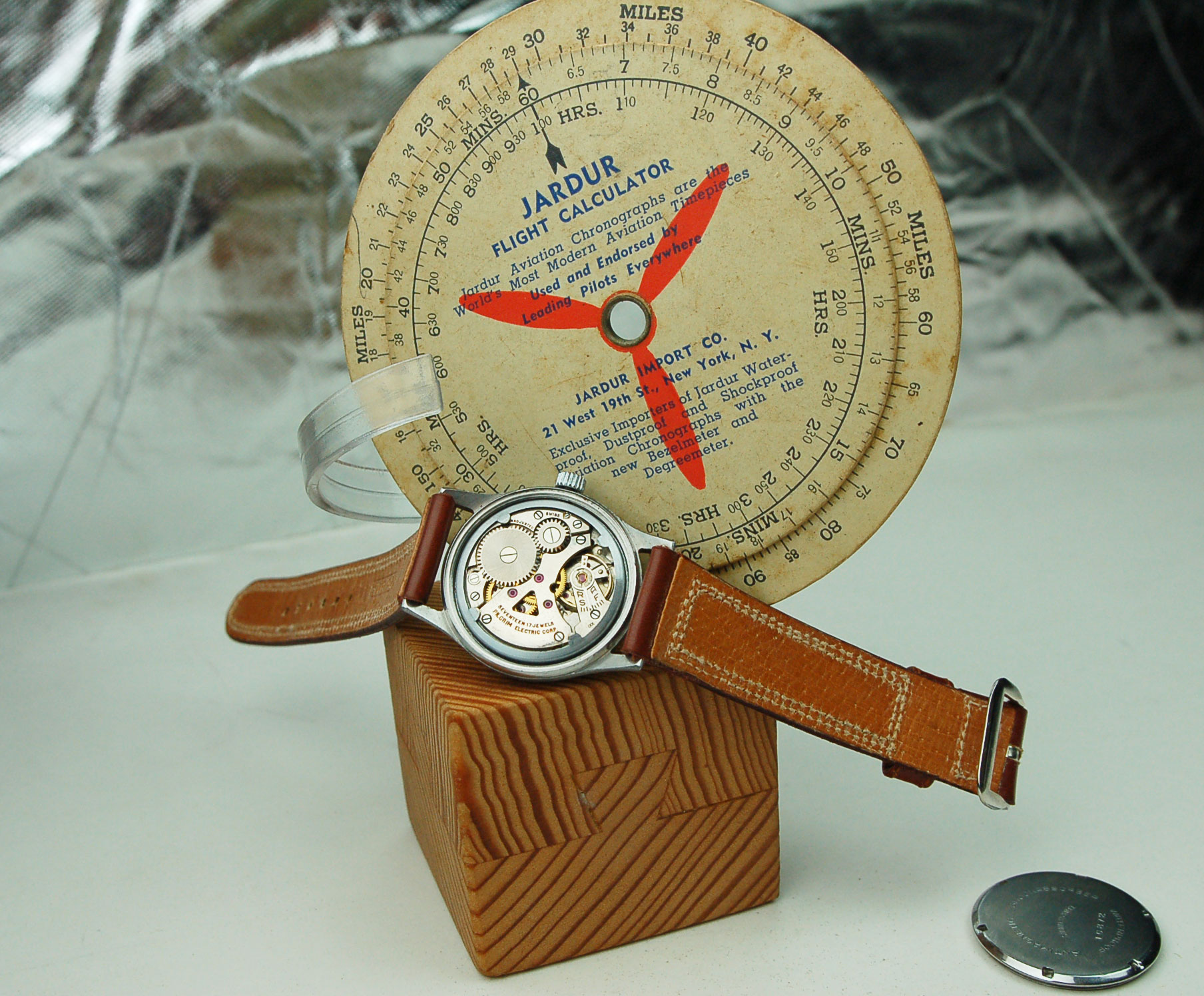
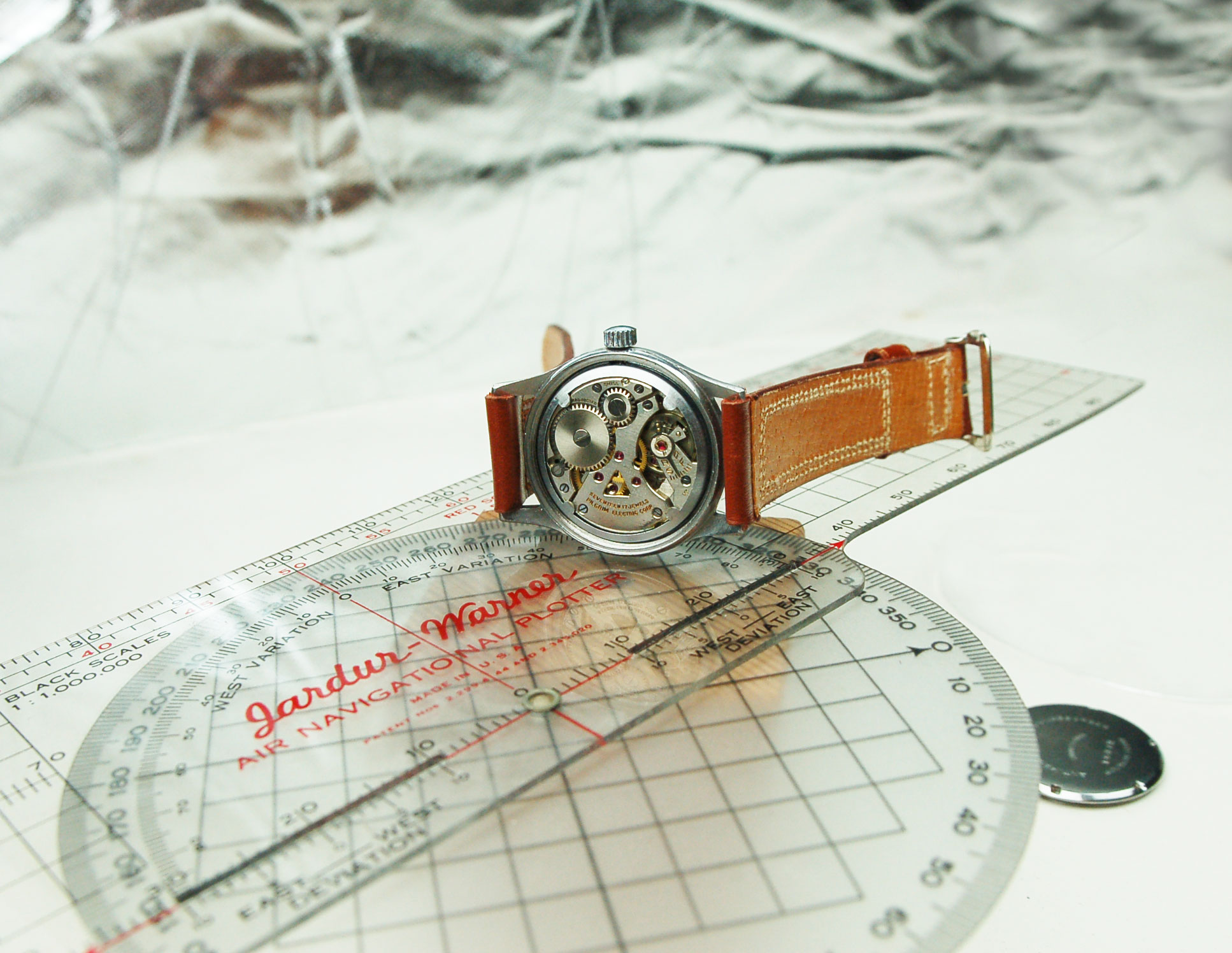



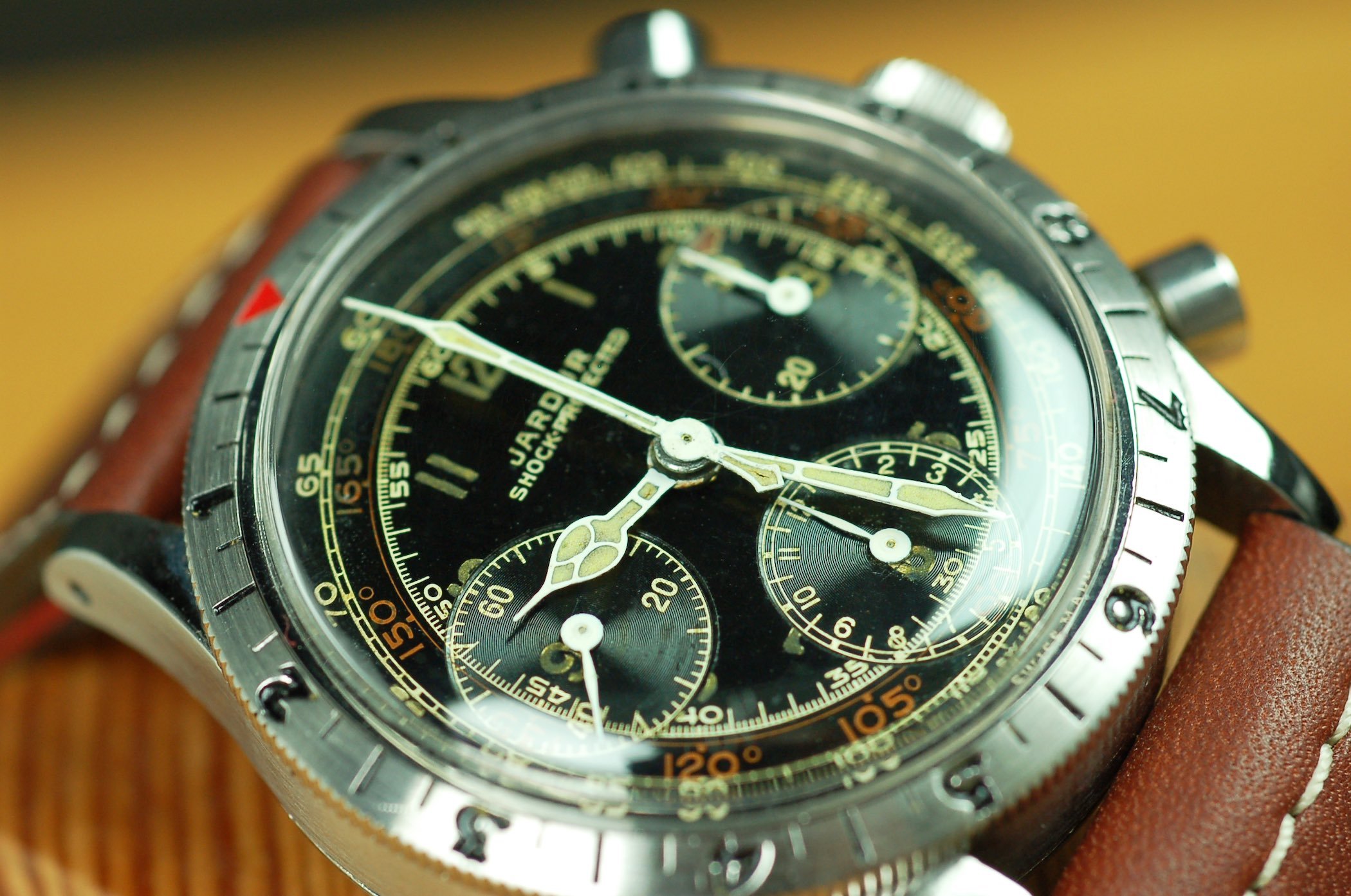
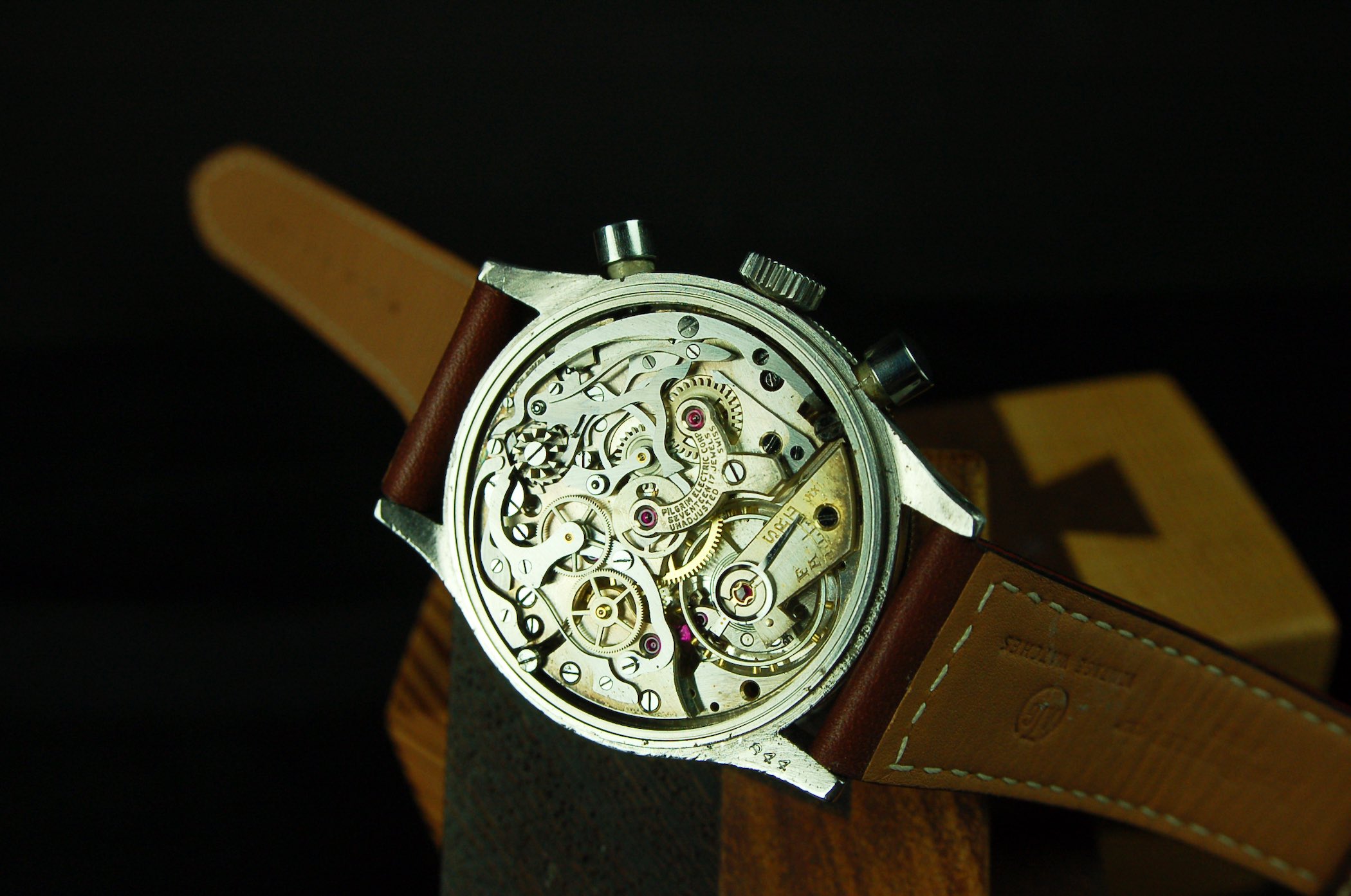

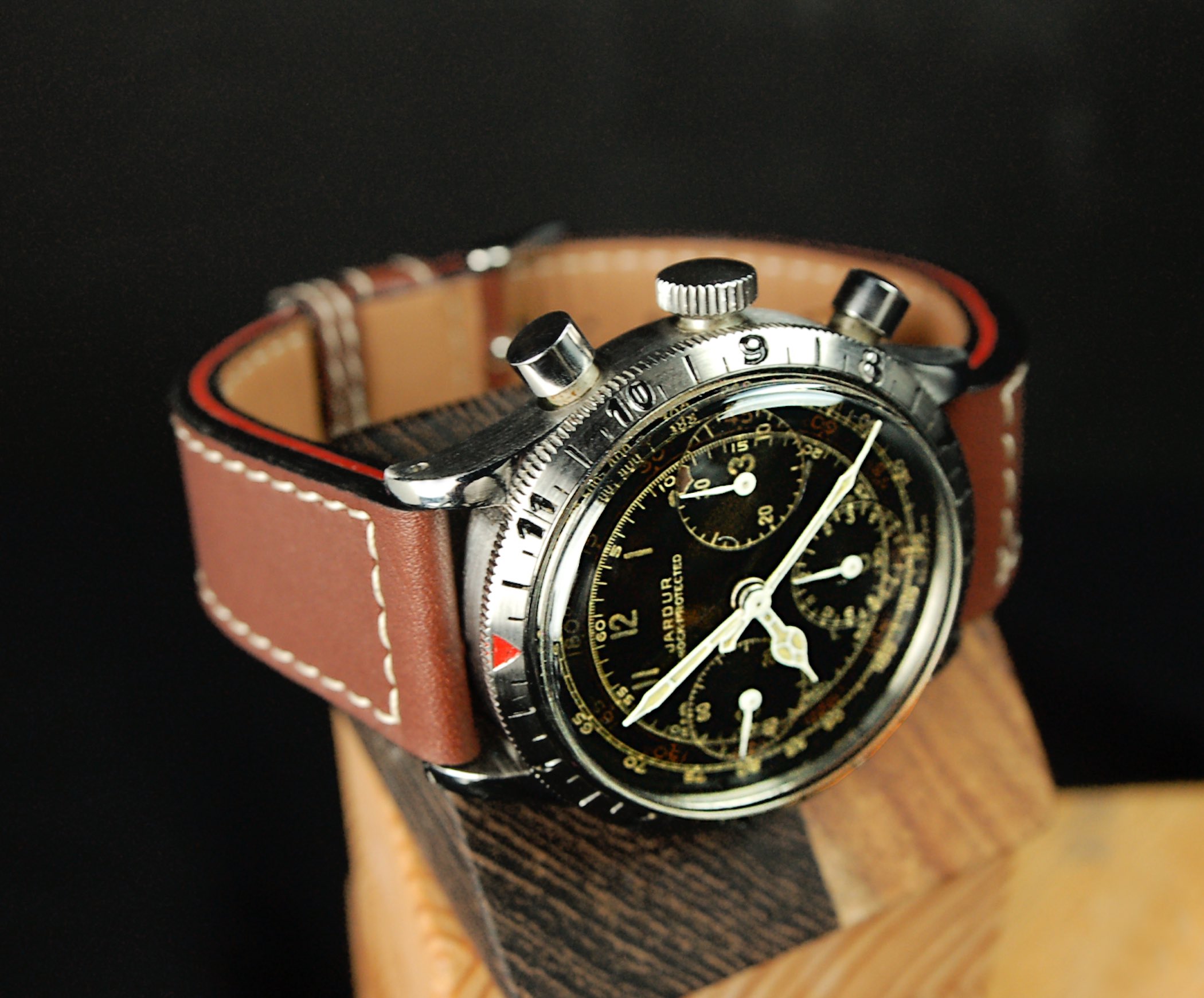

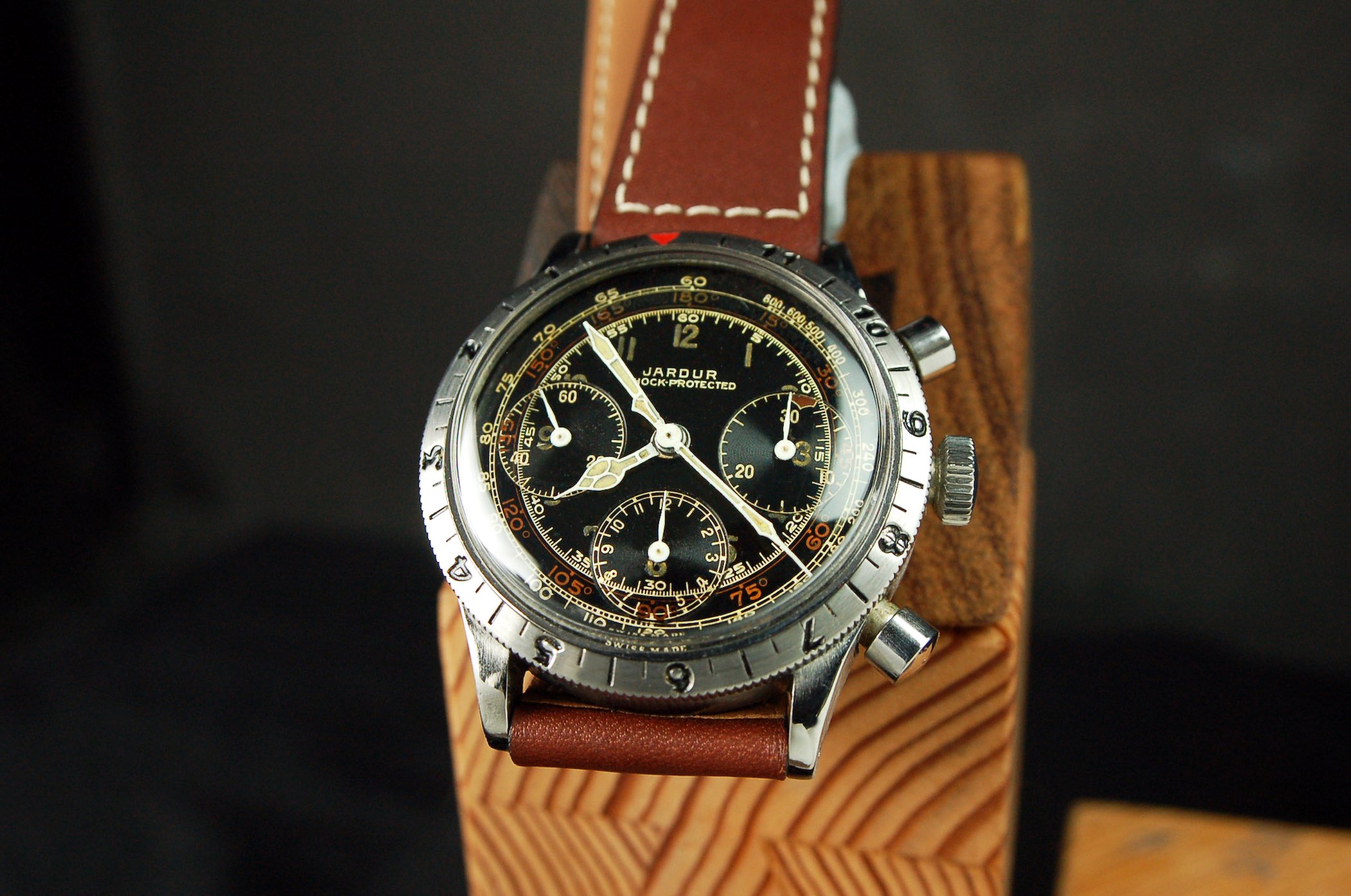
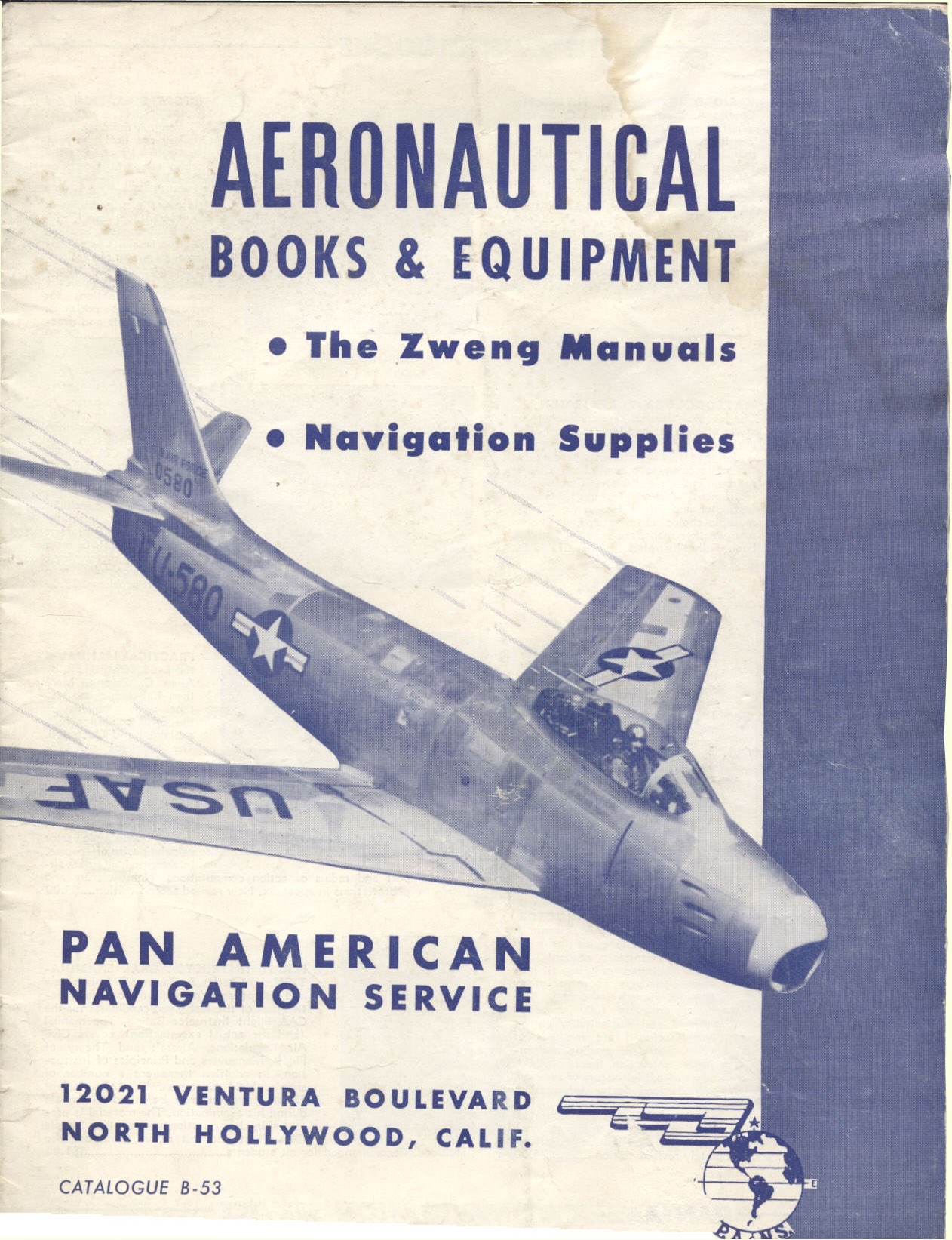
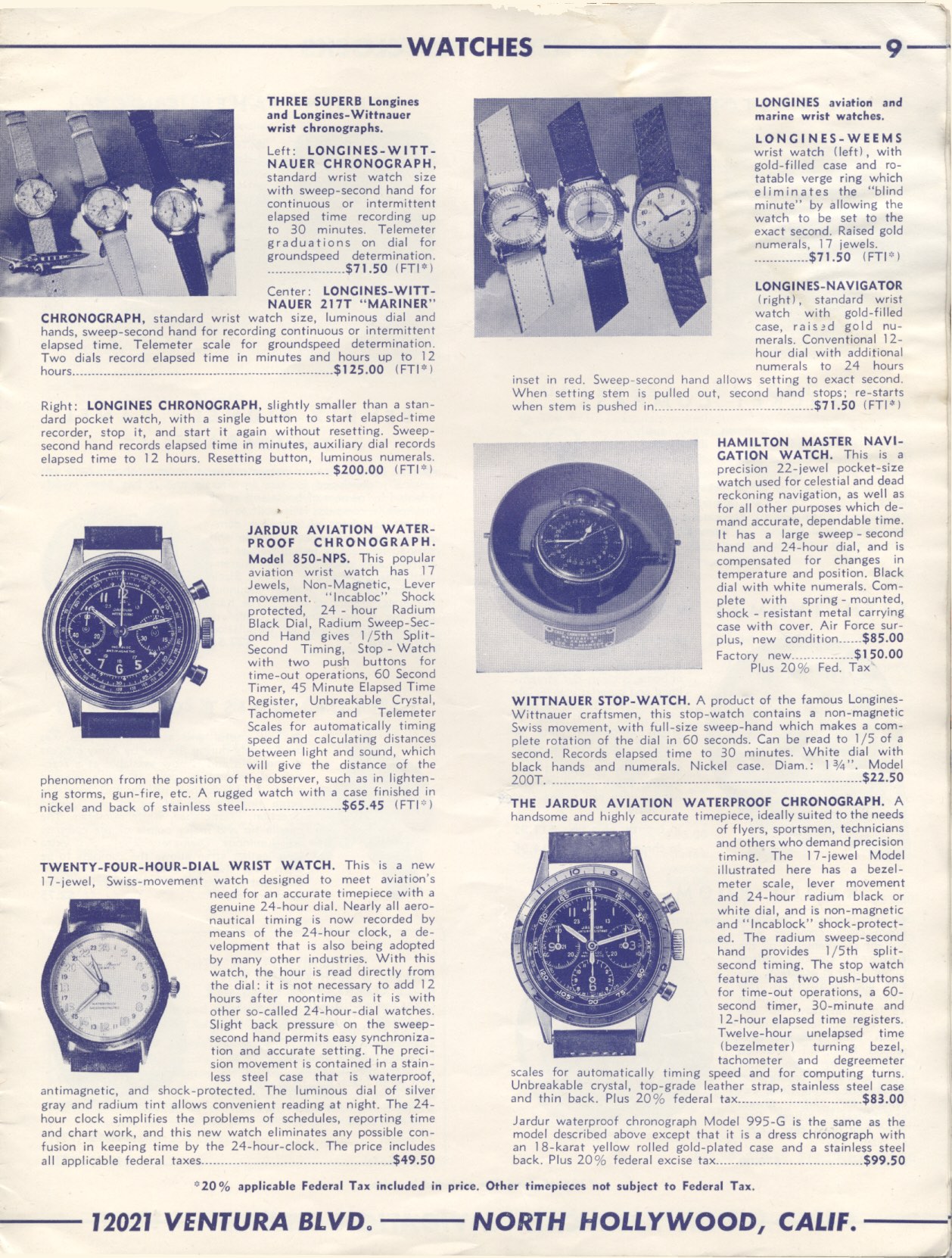
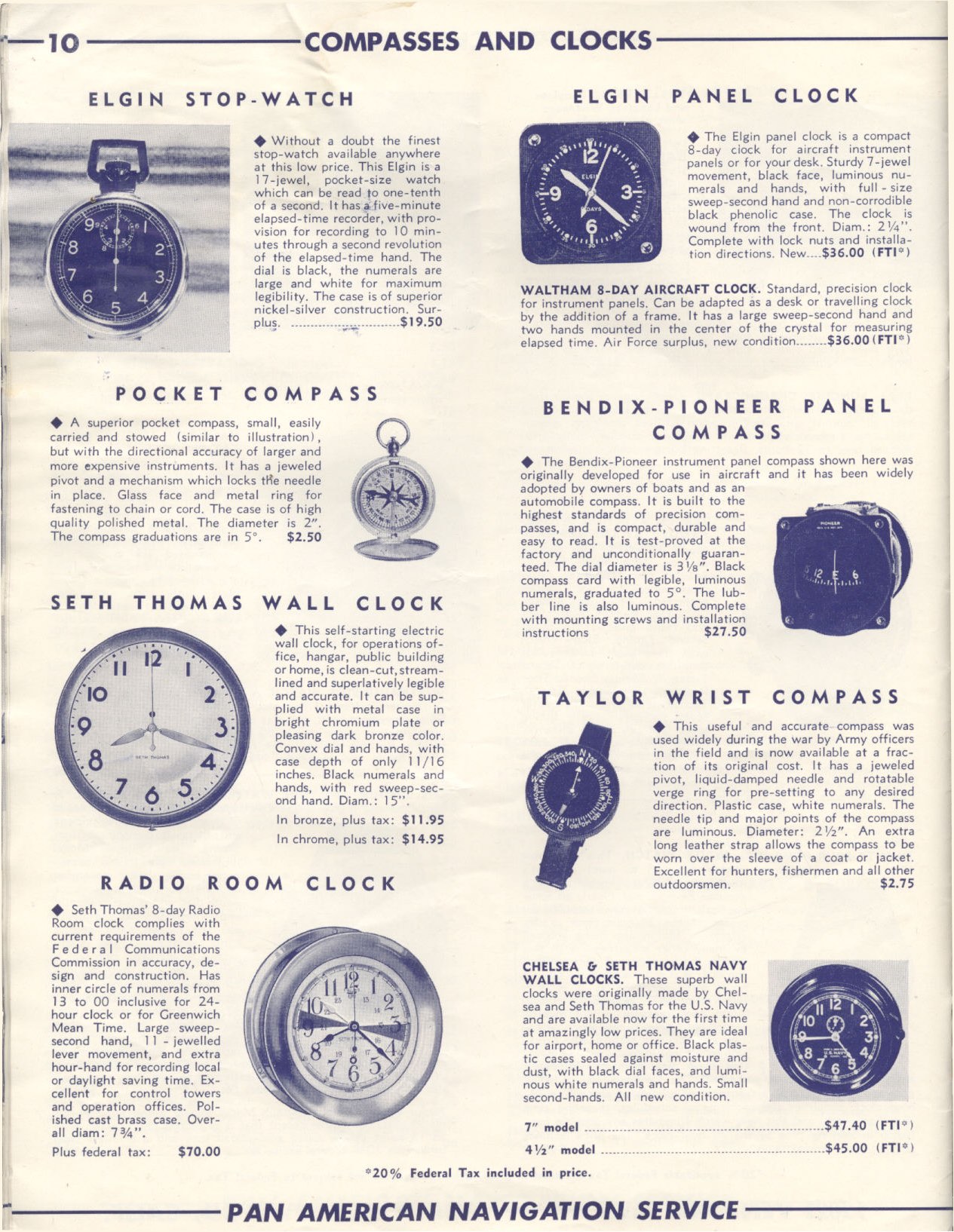



7 responses
Thank you for the interesting article. It was a great tie-in between aviation and horology. I was particularly interested in the photo of the Curtiss HS-2l flying boat. I have a picture of the same aircraft hanging on my wall, and when I checked, it had the same call letters – so it is the same exact aircraft! The picture I have was taken by my grandmother on the shores of Lake Minnitaki near Sioux Lookout, Ontario. The Curtiss HS-2l was used by the Canadian Air Force in the early 1920s for aerial mapping of northern Canada.
I can’t seem to be able to post the photo here. If you’d like to see it, send me a note.
Very interesting article. Gorgeous watch!
I’ve never been a big vintage watch fan from anything early then the 70’s and late 60’s do to there designs and size. Not having heard of this brand before I have to say I love the design but sadly at 38mm it would look like I was wearing a child’s watch on my size wrist.
Hi sure yes I would love to see the Curtiss pictures.. email to [email protected]
I just got one that belonged to my father. He was a Bird Col. in the Air force, WW2 in Africa. My brother who just passed had it first and now I have it. It is running but not keeping time. I need it repaired. Do you know who works on them? Thanks much. Tom
I have a picture of my Uncle, whom I was named after, wearing one. The picture hung in his office at the airport in Evansville Indiana. He is wearing one of these watches. The photo was taken sometime in the late 1950’s. I had to blow it up and spent hours looking at vintage aviation watches to figure it out. Wish I had inherited it but he died when I was just 8 yrs old.
I actually inherited one of these is fair to poor condition unfortunately , I am wondering if it’s worth restoring, as I would like to see it in its original form. This watch was used during world war II as my grandfather was a lieutenant commander in the Navy.